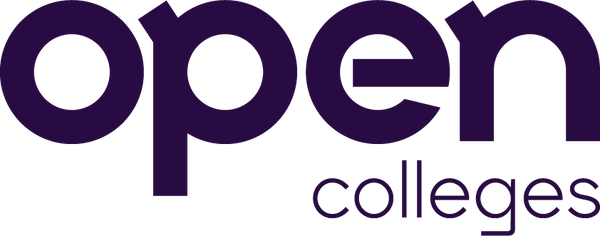Explore our collection of informative and educational blog posts to stay updated on the latest industry trends and expert advice.
13 Little Known Historical Events that Made Education What it is Today

This will be the first in a series of posts I will offer attempting to assess the contemporary status of education and possibilities for its future development. In order to lay a foundation for the project I will consider some important, but generally unknown, causes for the contemporary shape education takes in society.
1. The Invention of Writing:
I admit this is far from a little known historical event. But we don’t often think about the role it played specifically in the formation of practices of education.
Imagine if education meant going to the movies. At one time education was conveyed in the form of entertainment, in the same way that we consume movies, television shows and music. Educators were once famous entertainers and artists, like our musicians and actors.
Before a culture has writing the preservation of knowledge through memorization is incredibly important. This memorization occurs mainly through song and poetry. This poetry is then communicated to the community through performances that unite both entertainment and education. Passive audiences receive cultural education through a memorization that happens naturally due to repetitive musical performances and enjoyment. Information was preserved in the same way that songs we hear repeatedly on the radio enter our memories whether or not we want them to.
Educators were once famous entertainers and artists, like our musicians and actors.
Once writing became the dominant form of cultural memory, for example in places like Ancient Greece, a crisis in education began. It seemed that the information that had once required full community memorization by means of cultural performance could now be perfectly preserved in physical objects such as scrolls and, later, books. This decreased the importance of community educators, what we might think of as bards and poets, as preservers and transmitters of knowledge.
But, the idea that the written word and the pure information it preserved are entirely adequate for education conflicted with a continued sense that the ability to read alone did not provide all necessary knowledge. In particular, skills and methods of thought were difficult to preserve through writing alone.
Much of the following history of education involves a conflict between the providing of information to be memorized and a more personal interaction between the student and the teacher able to provide demonstrations of skills, methods of thought, and modes of behavior. The teacher becomes caught between simply providing texts while aiding or authoritatively enforcing the student’s access to them or, instead, playing the role of cultural performance once filled by poetic entertainers. The question becomes, is education about providing information or about initiating students into the living knowledge of skills and methods.
2. The Rise of Medieval Guilds:
What if getting into your high-school meant learning several secret handshakes and passwords, and the existence of your school was a secret that had to be kept from the most powerful political forces around you? What if getting an education was itself a revolutionary act? What if sharing what you learned could get you killed by your own classmates? If you can imagine this, you get a sense of what education in early medieval guilds was like. As we will see in this and the following two sections, educational developments during the Medieval Period were central parts of risky large-scale social revolutions.
Contemporary education is clearly considered a collective social concern and is frequently provided through community and government supported or run schools. This was not always the case.
Throughout much of history education was seen mainly as a family concern. Parents would provide whatever education was necessary for their children or find someone equipped to do so.

Within the Medieval Period, however, several developments led to dramatic changes in the forms education takes. One of these key changes was the rise of groups of craftsmen who, often in secret, developed and maintained standards for their areas of work. These became professional guilds.
The maintenance of professional standards required networks of education that initiated new members into the standard skills and practices of the line of work they were entering. Guilds served to refine and standardize a unique model of education, specifically apprenticeship, through which students studied for a particular amount of time with a mask of a craft before gaining the status of a legitimate craftsman.
The apprenticeship model of education was clearly hierarchical and eschewed the centrality of texts. Skills were not easily transmitted through texts, books were expensive, and most of society couldn’t read.
Apprenticeship offered a contrast with the family focused style of education. It also conflicted with the other dominant model of education at the time, church sermons. Church sermons offered a minimal type of social and theological education to entire communities as a social and religious service. Apprenticeship, on the other hand, was offered to only small numbers of specific students and payment was expected. This payment was provided through the service apprentices provided to their masters.
Perhaps most importantly, however, the formation of guilds took the power over education out of the hands of political and religious leaders. It also served to place control over professions in the hands of that profession’s most skilled masters. For these reasons guilds were often politically or religious repressed and guild secrets and control over professions were savagely defended.
3. The Forming of the Medieval Free Cities:
The formation of Medieval Guilds was part of another major social change. The 10th through 12th Centuries saw the formation of many cities in Medieval Europe. These cities were formed largely by peasants and serfs who, often illegally, sought independence from their service to nobles. They also came to exist largely free of any noble, royal or religious support. It is first within the free cities that we find the development of the guild networks discussed above. Hamburg, Bremen, Cologne as well as the vast majority of Italian city-states including Milan, Venice, Pisa and Mantua all started as Medieval free cities.
Up until the formation of the free cities education for the lower classes in Europe was tightly controlled by ruling nobles and the church while being limited primarily to religious and ethical teachings. With the formation of the free cities education could be expanded in the form of guild networks. Without these cities such guild networks would have likely been suppressed or kept from forming since they offered a social mobility, organization, and power to peasants that was opposed by rulers and religious leaders alike.
It is at this point that we see most clearly the early blossoming of a concept of education free from political or religious control. Once the free cities provided fertile ground for the establishment of guilds these guilds spread to cities existing under the rule of specific royals or nobles, such as Paris and London.
4. The Establishment of Universities:
Colleges and Universities have the reputation for being hotbeds of political activism, but it is less often recognized that their very creation was once an act of political revolution.
The largely practical guild networks protected within the free cities soon gave rise to a very different model of education, that of the university. Universities started out as themselves guilds, although they tended towards more advanced scholarly activity than the craft skills of concern to most guilds.
These scholastic guilds began, just like the free cities, without authorization or support from the nobility, royalty or church. It is not surprising, then, that many of the earliest universities began in the free cities themselves, such as the University of Bologna which began in 1088. However even royally governed cities such as Paris saw the rise of universities, such as the University of Paris sometime before 1150, which asserted their independence from royal or church authority.
What we see in the University, then, is the combination of the apprenticeship model of education and its resistance to external authority but with the addition of textual scholarship. This was to prove so powerful a form of education that, despite their independent and arguably revolutionary beginnings, Universities would swiftly gain the support and patronage of kings and popes.
5. The Reformation
Would you believe that the changes that plunged Europe into over a hundred years of religious warfare during the 16th and 17th Centuries were largely about education?
The Reformation was the bloody split within Christian Europe that lead to the formation of most of the Protestant religions. It began in 1517 with the posting of Martin Luther’s Ninety-Five Theses, which demanded certain changes to the structure and dogma of the Catholic Church. Much like the first item on this list, this is certainly not a little known historical event. But what tends to be little known is that it was largely an argument about education.
The main justification and role of the Catholic Church during the Medieval Period was as an interpreter of the Bible and teacher of the book’s message. Those who were not members of holy orders were not, however, expected or encouraged to read the book if indeed they could read at all. In fact, reading the Bible was frequently outright forbidden since those with a basic education were not expected to have the knowledge or skills necessary to interpret its meaning.
Since for the Medievals the Bible represented the foundation of all ethical, political and cosmological knowledge, let alone religious truth, the authority to interpret and teach the Bible was synonymous with complete control of education in general. This also meant control of any questions of political or legal legitimacy. It was very clear in the Medieval Period that those who controlled education controlled society.
One of the key developments of the Protestant break with the Catholic Church was the idea that the Bible should be translated into the languages of the individual nations and be made available to all literate people. This amounted to a claim that everyone should be able to educate themselves.
Here we see the contrast, mentioned earlier when discussing the invention of written language, between a belief in the adequacy of a text for education and the belief in the need for an educator. We also see an expansion of the guild and university commitment to education and thought free from political or religious control. Although it wasn’t the intention of the religious thinkers who lead the Reformation, this would be the foundation of the rise of secular and public education.
6. Colonialism:

Throughout history education has been tied to issues of political power. As Europe expanded its political and religious influence through exploration, conquest and colonization it brought with it models of education intended to help solidify its world power. The 18th and 19th Centuries saw massive world-wide changes to education fueled by the needs of colonial governance in places like Africa and India.
In 1835 Thomas Babington Macaulay, an important British historian and politician, introduced a system of public education in India with the goal of creating an English speaking anglicised class of Indians who could work as cultural intermediaries between the British colonial forces and the Indians. His reforms were built on the back of the earlier establishment of missionary schools that taught English primarily as a method for conveying religious teachings.
This basic development, from missionary education to civic education intended to assist in the goals of colonial rule was to be a basic pattern throughout the colonized world.
These reforms, which rested on a foundation of small local schools in villages and developed up to the level of establishing Universities such as the University of Madras in India, make clear the continuing tension between visions of education as independent from, or even opposed to, political and religious domination and education as a tool of both political and religious power.
7. The New England War on Satan:
Yep, you read that correctly. Public education in North America was born under the banner of a war on the devil! In the 1640s the American colony of Massachusetts passed a series of school laws establishing the first colony-wide public schools. These laws would soon spread throughout the American colonies generally and provide the foundation for public education in the new nation following the American Revolutionary War.
That all sounds mild enough. But the most famous and first of these laws, the one that got the entire ball rolling, came to be known as the “Old Deluder Satan Law”. This law starts out rather dramatically as follows, “It being one chief project of that old deluder, Satan, to keep men from the knowledge of the Scriptures, as in former times keeping them in an unknown tongue…” and then proceeds to legislate the necessity of all citizens of the colony learning how to read through the establishment of a school system.
8. The Failure to Establish the New Hampshire State College:
No one would have expected the failure to found a state college to give birth to the public library system. But history is often a story of productive failures and happy accidents. The birth of the public library system in the United States of America, which was to influence similar library systems throughout the world, was the product of such a failure.
Libraries of various sorts have been around throughout history. However, most of them have been limited to certain social classes or specific members who alone are allowed access. Benjamin Franklin, for example, is often touted as having helped to found the public library system of the United States of America. What he established, however, was a pay service whereby people could pay to be part of a book sharing organization. This ruled out library access to any without the money to pay for it.
In the 1830s the State of New Hampshire decided it wanted to start a state college. It gathered taxes for the project but eventually hopes of founding the school died. The state, left with the money that had been gathered to found a college, decided to return the money to the state’s townships for the generalized purpose of expanding education.
In 1833 the small town of Peterborough, upon receipt of the money, decided to invest in books and open a library available to all citizens of the town. The idea quickly caught on and in 1849 New Hampshire was the first state to pass a law allowing local tax money to be used in the founding of public libraries. In 1854 the Boston Library, often considered the first real public library in the U.S., was founded. The rest is educational history and all thanks to the failure to found a college.
9. The Invention of the Female Teacher:
It is certainly bad to think that the role of schoolteacher is properly just a role for women, but there was a time when just this idea changed the face of education, and the opportunities open to women, for the better.
Sexism and the systematic denial to women of access to education loom large in the history of the world. However, the limiting of women to what in the past were wrongly considered distinctly female careers is also a key moment in the history of sexism. It is interesting, however, that the creating of the image of the female teacher was a valuable, if limited, move in the war for sexual equality and a decisive development in the history of education.
If you consider the power involved in the role of educator it is clear that for much of history the secondary status of women was maintained by distancing them from knowledge. The entrance of women generally into education was a decisive revolution in this history and it occurred in large part due to the work of several hardcore female writers and teachers. These include Abigail Adams, whose letters to her husband and future U.S. President John Adams stand as a monument to her intelligence and commitment to the importance of female citizens in the new country; Lydia Maria Child, whose work for women’s rights, the abolition of slaver, Indian rights and female education were highly influential; and both Catharine Maria Sedgwick and Lydia Sigourney, whose poetry and novels placed female literary contributions firmly in the bloodstream of American culture.
On top of their other achievements, each of these women contributed to a development that would come to be known as the “Republican Motherhood Movement”. Their argument was that the formation of civic-minded U.S. citizens depends extensively on the role played by mothers in the rearing and education of their children. As such, the political and social health of the nation depended on the existence of educated mothers prepared to raise their children with a full knowledge of the cultural and political heritage that made the nation possible.
This argument proved so influential that it led to the inclusion of women as students in the previously largely exclusionary public education systems. It also created the clear image of the woman and mother as educator that led to the establishment of women as a central pillar of the educational edifice through the role of schoolteachers.
10. The Invention of Childhood:
Yes, it may sound strange to talk about the “invention of childhood”, but different societies and different historical time periods have given rise to very different conceptions of childhood. In his book Childhood and Society, the famous developmental psychologist Erik Erikson argues for precisely this point through discussing the role that our conception of childhood plays in our understanding of society itself.
Surprisingly, much of history consists of the view that children are just small adults waiting to grow into full bodily power. The idea that mental capacities take an extended period of development to mature has not been the standard view. Conceptions of the length of childhood and its nature have therefore varied extensively. It should be no surprise that how childhood is conceived plays a huge role in the extent and nature of the education a child receives.
Much of history consists of the view that children are just small adults waiting to grow into full bodily power.
Developments in the 19th and 20th Centuries in education have gone hand in hand with changes in how childhood is understood. Consider, for example, the difference between some children on farms in the 17th Century who were taught to read from adult texts and integrated into adult farm labor or married off at young ages versus the contemporary tendency to isolate stages of childhood in which children are largely sheltered from the adult world and engaged with uniquely childhood activities and types of education.
We can see the relation between conceptions of childhood and conceptions of education clearly in the example of the Meiji Reforms in Japan. These were reforms aimed at restoring imperial rule in Japan in 1868. Part of the reforms, however, was a new education policy involving an establishment of modern public education in Japan. Part of these educational reforms included the importation of Western-style schools and the dedication of time during childhood to the reading of children’s books, playing with educational toys and schooling specifically aimed at different age groups. Prior to this children were seen very much as adults and not provided space, education and activities unique to a period of childhood. The Meiji reforms represent, then, an establishment of certain conceptions of childhood that had largely been invented previously in Europe and America.
11. The Resignation of Jonathan Baldwin Turner from Illinois College

Jonathan Turner was a professor at Illinois College who was forced to resign because of unorthodox religious views, passionate abolitionism, and controversial views concerning colleges and universities. After resigning he had time to dedicate more extensively to educational activism, and the U.S. public education system has never been the same since.
Before the contemporary period of history colleges and universities were general established independently from government support. Sometimes they were even formed directly in opposition to government power, as in the case of the first medieval universities, or through local and state support without the larger intercession of the nation as a whole as in the case of the failed New Hampshire state college of the 1830s. That changed in the middle to late 1800s in the United States. At the same time that colonial powers were establishing the University of Madras in India, a similar involvement of national policy in education was occurring in the U.S. though aimed towards a different goal.
The first real move of the federal government into the realm of public education was the Morrill Land-Grant Colleges Act of 1862 and 1890. These would lay the groundwork, however, for more extensive federal involvement in the elementary levels of education as well.
These acts, which provided federal land to each state for the establishment of public colleges, were largely the outcome of the work of Jonathan Baldwin Turner. Following his resignation from his teaching position Turner dedicated himself to opening up higher education to the industrial and agricultural classes. Appalled by the extent to which traditional colleges and universities were inaccessible to farmers and industrial workers, Turner pushed for the establishment of public nonreligious colleges dedicated to agricultural and industrial subjects. This idea did not just help force him out of his teaching position, but also led to his farm being burned to the ground. Indeed, the first Morrill Act could only be passed because most of the states that opposed the act had seceded from the Union in the build up to the Civil War.
Unlike during the Medieval Period, this connection of centers of higher education with national political authority served to insolate them from the overt control of either the religious or moneyed interests and opened them up to the lower classes. It is possible none of this would have happened, though, had not one man been forced out of his teaching job.
12. World War II
If World War II certainly isn’t a little known historical event, the fact that the fate of the war likely turned on questions of education may be. World War II taught the nations of the world the lesson that education, whether used in the invention and breaking of secret codes or the development of planes and city-leveling bombs, decides wars. In fact it has often been suggested that a large part of why the war went in the direction it did was because the Nazis had driven out many of their best scientists. This fact kept them from being able to develop an atomic bomb of their own. Albert Einstein, for example, had emigrated to the U.S. from Germany due to the rise of the Nazis and was the one who informed President Roosevelt of the possibility of an atomic bomb. The war made clear that power rests in the hands of those with superior technology and that technology depended on education.
It was considerations like these that contributed to the largest expansion of education in the United States in history at the same time that other countries were pursuing similar expansions. In the U.S. it took the form of the G.I. Bill, provisions of which provided funding for returning servicemen to attend college. The bill, which had originally also provided funding for the underprivileged but passed having been limited only to servicemen, set off a huge boom in college and university education. Similar booms were underway in places like the United Kingdom, where funding was extended to all citizens who needed it in a manner similar to President Roosevelt’s original intention for the G.I. Bill.
It had been clear, from the Medieval Period to the Colonial and beyond, that control of education meant control of society. World War II, on the other hand, made clear that quality education meant control over international world events especially within the venue of warfare.
13. Sputnik and the Space Race

For the first time in history a small man-made satellite successfully enters orbit around the earth and a new international technological race begins. The U.S.S.R.’s launching of Sputnik set off what would be known as the Space Race, a race between capitalist and communist countries for who could gain dominance over space first. This went hand in hand with larger investments in, and reforms directed towards, public education.
What the many-leveled technological races of the Cold War made clear was that educational foundations for technological innovation are not just limited in their influence to literal warfare. The Cold War was also largely an economic conflict, and the Space Race was as much about economic investment and return as it was about control of space. In fact it has often been suggested that strategies like the Space Race were about overspending the competition, and so driving them into economic collapse.
From the moment in 1961 that President Kennedy announced that the U.S. would put a man on the moon, national investment in education for the sake of security and economic health became an unavoidable refrain in public debate. It is now clearer than ever that the topic of education is unavoidably connected to the economic success of any nation.
Stay tuned for my next post in which insights drawn from the history we have looked at will provide the foundation for considering “Hidden Challenges Facing Contemporary Education”.








